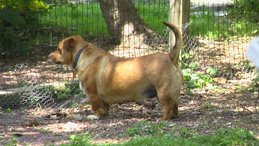He took us to the oldest part of the medina, or old city, to meet some traditional artisans. The first was a 13th century wood carvers shop, where a man used his hands and feet to operate a lathe on the ground and turn tiny dowels into delicate beads and rings. We saw a traditional community bakery still in operation, because the bread tastes better baked this way, Omar said.

The highlight of the morning was the rug coop. This establishment markets rugs from all over the country. We were warmly welcomed and invited to take seats around the enclosed courtyard, where the show began. One man began to tell us about how the rugs were made as others dramatically pulled rolled up carpets from the stacks surrounding them and unrolled them with a flourish.

The speaker identified the tribe that made each rug and pointed out the features unique to that tribe's style. It was fun to see who gravitated toward which rugs. We all had different favorites. After the show, we were encouraged to wander around the towering stacks and choose the rug we wanted. At one point, as I was looking at a rug I liked and trying to calculate the exchange rate of Dollars to Dirham, the salesman said, "don't look with your eyes, but your heart!" I heard others ask, "which one do you love?" It's a good technique. It also illustrated the real value of the rugs. The actual cost of the rugs was pretty dear, too. With Omar's help I was able to get a small rectangular rug made in two styles - flat weave and knotted - in muted red and blue. At one point the haggling seemed to be escalating. I told Omar to say I was a poor teacher who could not afford a big price! With that the man in charge said okay, "You deserve it!" And cheered from the balcony over looking the courtyard.
Time was quickly evaporating so Omar hurried us through the medina headed toward an area of souks, or shops, where he trusted the owners to give us good deals. Our passage was slowed by a donkey cart that was having trouble staying on the cobbled road and between the souks. Eventually we wandered into an open area with an aromatic spice shop.

Omar guided us away from the snake charmers and the more garish tourist traps and instead gave us a glimpse into the history of this ancient society and the people who uphold it.
We eventually headed back to Casablanca and its crowded streets and industrial smog. The ship has become home now, and we were all eager to get back to our cabins and wash off the desert. The next morning many of us took off along the coast for a tour of the mosque.
The Hassan II Mosque is named after the late King of Morocco and took about 6 years to build. It claims to be the third largest in the world, behind those in Mecca and Medina. It is a stunning creation that makes the largest Christian cathedrals look quaint. When we first drove past it at the beginning of the week the weather was beautiful and clear, showing off the mosque. The day of our tour was foggy and damp and the top of the mosque itself and its minaret (the tallest in the world) were completely obscured.


The building is an interesting mix of ancient customs and artistry and modern engineering. The wooden ceiling is retractable, like a football arena, and on this morning it was open to air out the mosque. Additionally, there are several large titanium and bronze doors that raise and lower like garage doors, though much bigger and heavier! The building sits right on the coast and extends over the water, recalling the Quran's description that the throne of God was built on the water. Glass doors look out over the sea. Below there is a huge ablutions room for men, and public baths, or hammams, for men and women.

Over 100,000 people can gather at the mosque - about 20,000 inside and the rest in the outside courtyards, among the fountains. At night, a bright green laser points from the top of the minaret toward Mecca, telling everyone in Casa what direction to pray. It is one of the only mosques in Morocco that non-Muslims are permitted to enter, including women. We appreciated the hospitality of the community to allow us to see this magnificent building. It somehow seemed to be both opulent and sparse at the same time. No doubt something made possible by its sheer size.
As we were arriving in Morocco we were aware of the controversy heating up in the States about the man in Florida who was planning to burn Qurans. We realized that we would be traveling on September 11 and we were warned to be careful. At times we experienced a distinct hostility toward us, whether because we were loud Americans, or non-Muslims, or immodestly dressed we did not know. However, on Sept 10, the first day of Eid, when we were in Marrakech, I had a conversation with a shop owner (in French!) about the proposed Quran burning. The shop owner, who was about my age, told me that the Quran is given by God and is something that one lives. To burn a Quran is dumb because the paper is unimportant. We wipe our hands with paper, he said. I agreed with him about how dumb this act is, and said that the Bible too is something that is lived and not merely written down. After the warnings we'd received, I was very grateful for this exchange and some shared understanding. I was also grateful that he was willing to make a distinction between us and the fool in Florida!
Soon we were back on the ship and heading south toward Ghana.














